Visiting Cervia, Italy: Beaches, Canals, Seafood and Storied Salt
This website uses affiliate links which may earn a commission at no additional cost to you. As an Amazon Associate I earn from qualifying purchases.
Updated: 17th August 2023
My time in Cervia was supported by Visit Cervia and Ravenna Tourism
Along the sun-drenched sands of the Emilia Romagna Riviera, you’ll find Cervia, an Italian city of two tales. One side serves up Pope-linked sea salt stories of ancient origins, while the other is grounded in gardens and seaside getaways. Combined, they offer an attractive blend of culture and coast, either as a side trip from Ravenna or Bologna or as a standalone beach getaway, with all the gelato, seafood, sun and sand a Mediterranean holiday needs.
In Cervia, a historic Italian town that has been shaped by the surrounding salt pans (and was even picked up, moved, and then rebuilt in its current location), you’ll find a traditional core where typical seafood restaurants and fisherman’s clubs dish up the celebrated local mussels, freshly grilled fish, squid risotto and fritto misto (mixed fried fish). There’s also a museum dedicated to the renowned local sweet salt. So prized, all of the salt pans here were once owned by the Pope – and even until this day, the town hand delivers some of their finest ‘white gold’ to the Vatican annually.
Meanwhile, moments along the coast, Milano Marittima unfurls. Even though this leafy destination is over three hours from the country’s fashion capital, its name honours the fact this has long been a favourite seaside getaway for residents of Milan. Nowadays, the garden city is mainly a spring until autumn beach resort town, with grand abandoned and renovated Art Nouveau villas (once the holiday homes of Lombardy’s wealth), flower and fountain decorated boulevards, and an alluring swathe of sandy beaches which aren’t just welcoming visitors to their shores these days, but even nesting turtles.
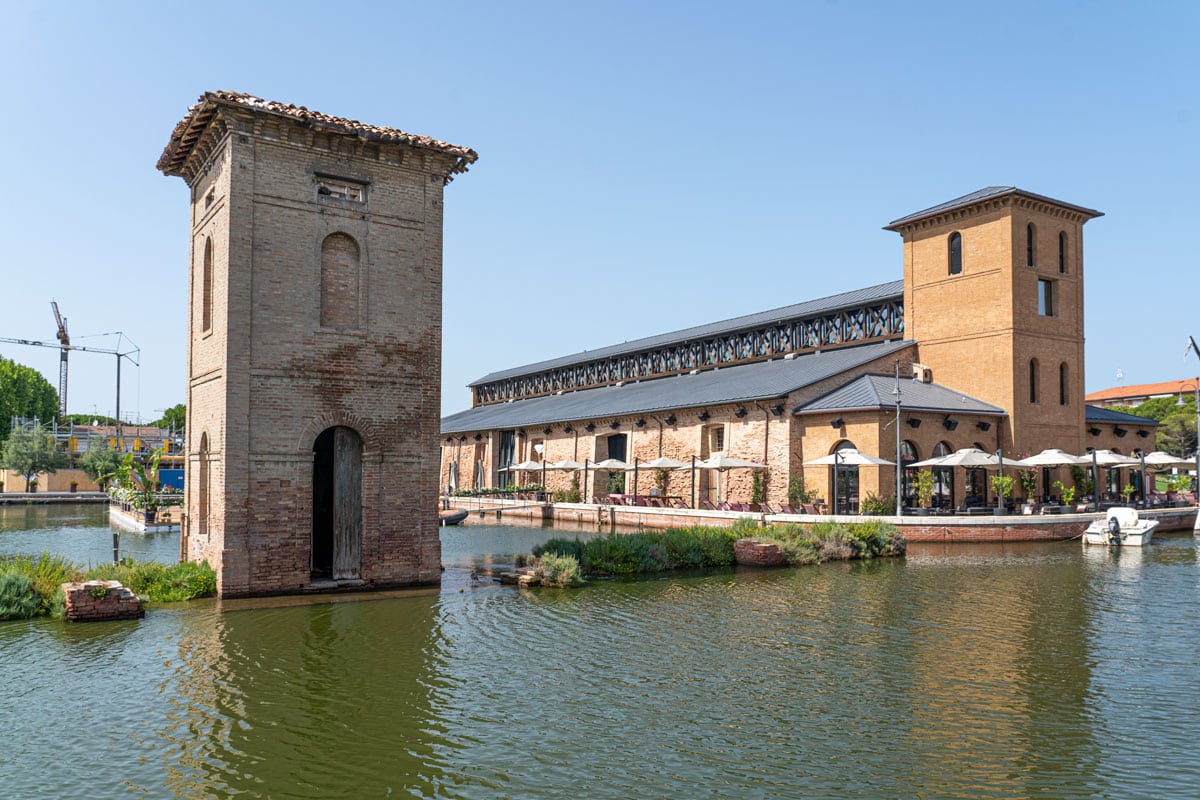
I’ve been to Emilia-Romagna more times than I can count, but this underrated corner of the region had somehow eluded me. At first glance, I thought this was just another beach destination – but when you look a little closer, as with everywhere in Italy, the storied past becomes much more evident.
Here’s how to make the most of your visit to Milano Marittima and Cervia, whether you’re seeking a beach getaway, a side trip from Ravenna, or only have one day to learn all about this corner of salt-heavy coast – with time spared for some sunbathing, of course.
Things to do in Cervia and Milano Marittima in one day
Of course, most people who come to Cervia are spending their vacations enjoying the Emilia-Romagna Riviera. It’s a holiday destination designed to stay and play – whether that’s on the beach or in the bars. But if you’re not here for a seaside escape and instead are just touring Emilia-Romagna, this is my suggested itinerary for one day in Cervia and Milano Marittima, thow European hidden gems.
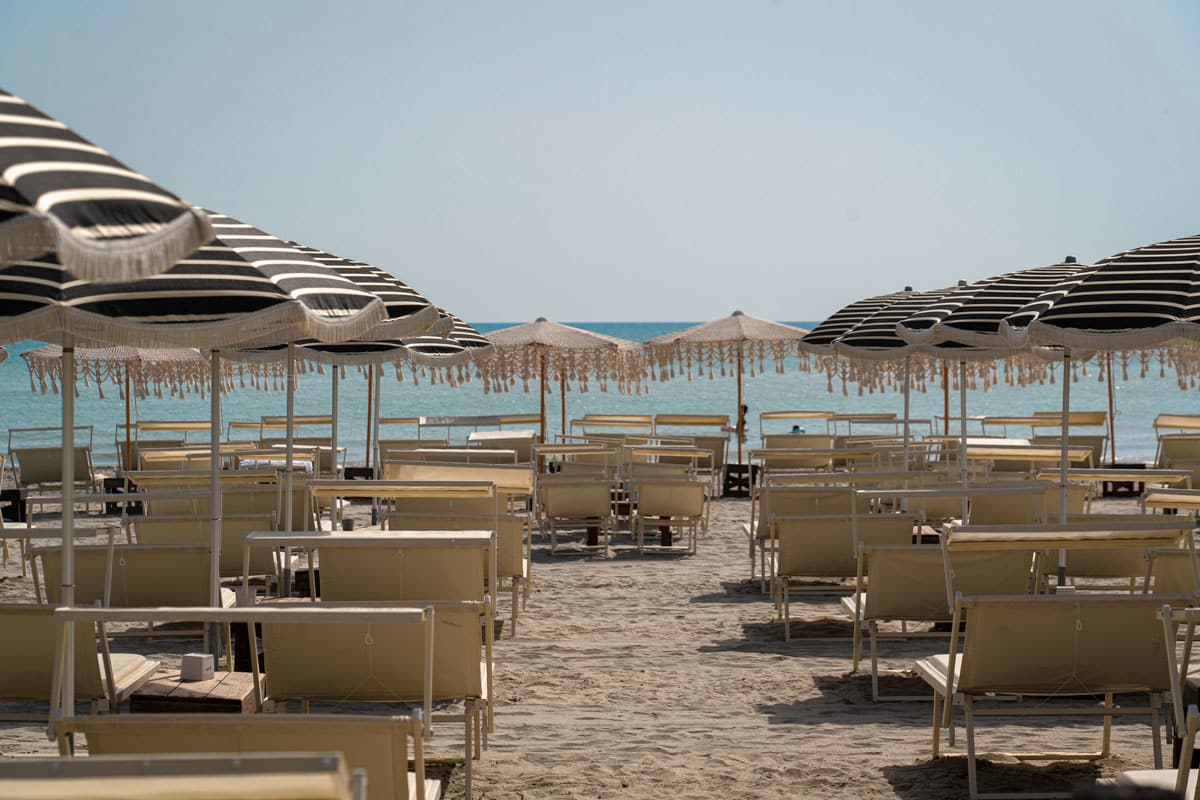
Morning: Enjoy Milano Marittima’s beach
If there is one thing Milano Marittima is known for its beaches, so what better way to start the day than with a dip in the Adriatic Sea – especially if you’re visiting in summer when the mid-day sun will be intense.
While there are plenty of beaches along this stretch of coast, I’d personally suggest heading to the sands around Cala Zingaro, just north of Milano Marittima, as here you’ll not just find the parasol and sunlounger beaches that Italians seem to love, but also free, empty ‘wild’ sands where you can just lay out your towel.
There’s a great beach bar next door for breakfast, brunch or coffee, and you can also spot a relic of Italy’s more recent history here, as behind the dunes, the remains of the Colonia Varese. This vast complex was constructed during Mussolini’s dictatorship as a kind of summer kids’ educational camp. Thankfully, nature is reclaiming its space, and pine trees now shroud some of the building while turtles use this stretch of coast as a feeding ground and in 2023, the first one has even nested here.
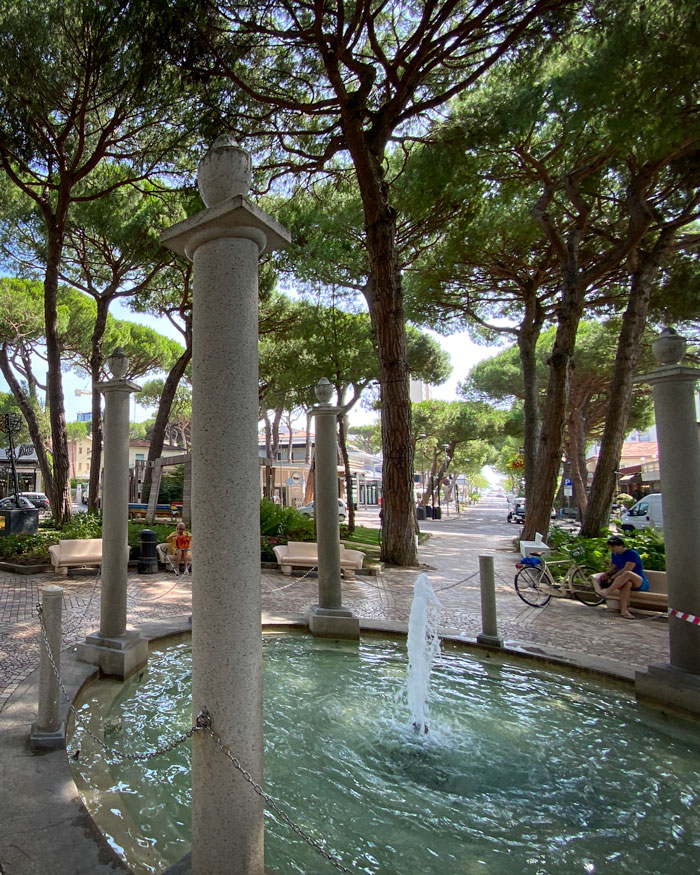
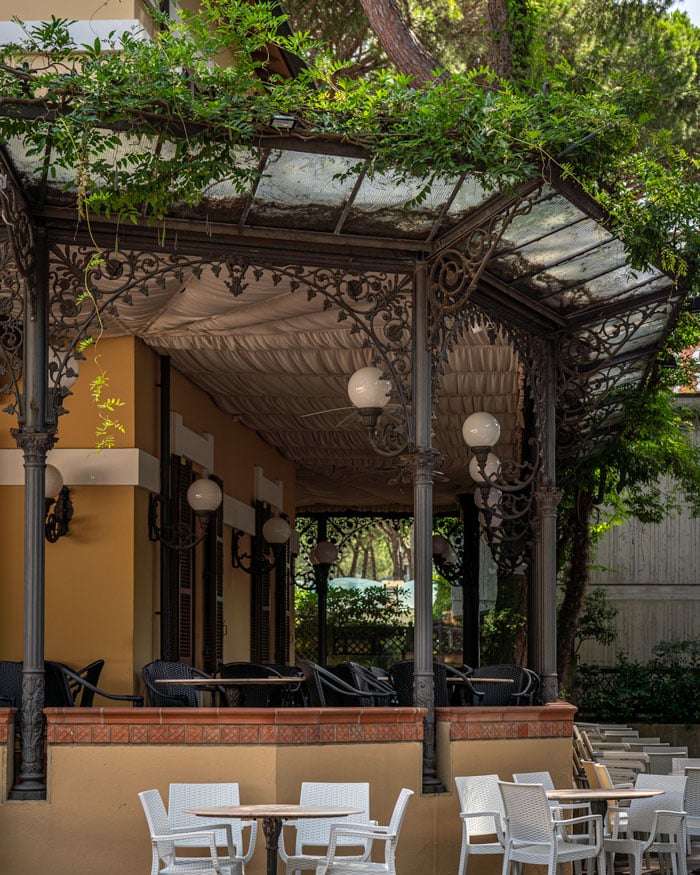
Late Morning: Explore Milano Marittima, the garden city
After a dip and breakfast, take the short stroll into Milano Marittima proper. It’s a rather upscale and classy resort, and remnants of the luxury families from Lombardy who used to holiday here can be spotted in the grand Art Nouveau villas which sit on the boulevards. While many are now abandoned and sadly in disrepair, a few have been restored, such as the building housing the L’Ottocento gelateria.
Another that stands out is Villa Palanti (still a residential building) which was designed by the Italian artist Giuseppe Palanti, one of the many arrivals from Milan. While it’s hard to imagine now, malaria put a damper on the town’s original dreams for tourism – it was mainly poor salt works occupying the region then – and it wasn’t until the train arrived in 1875, and Palanti later in 1912, that the ‘Garden City’ idea was born and the town was totally redesigned.
Nowadays, the grand streets, gorgeous statues, garden-heavy roundabouts, and colourful flower displays make this one of the most desirable beach destinations in the country. Go back a decade or two, and luxury nightclubs and sports cars were even more commonplace.
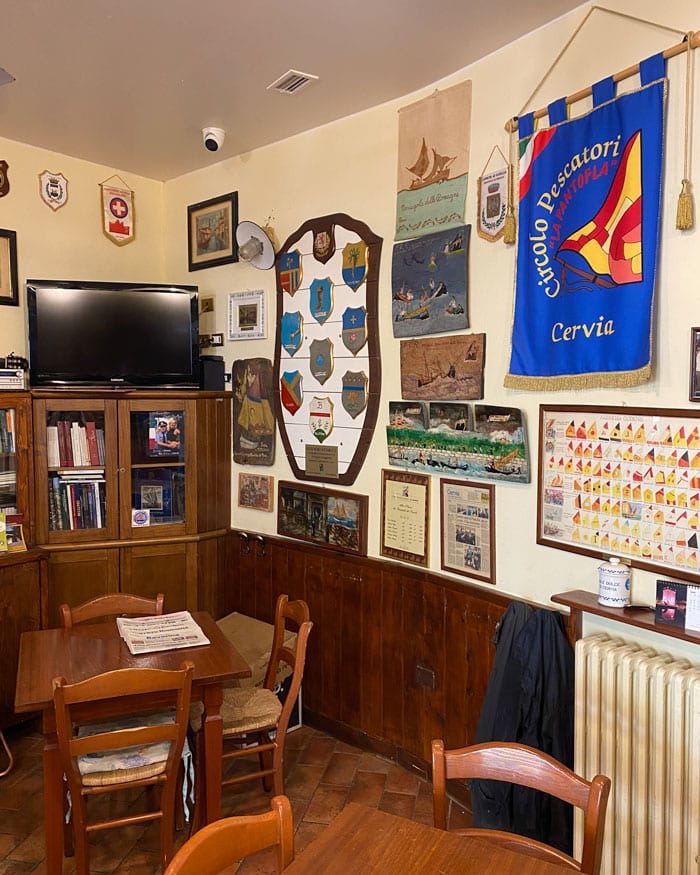
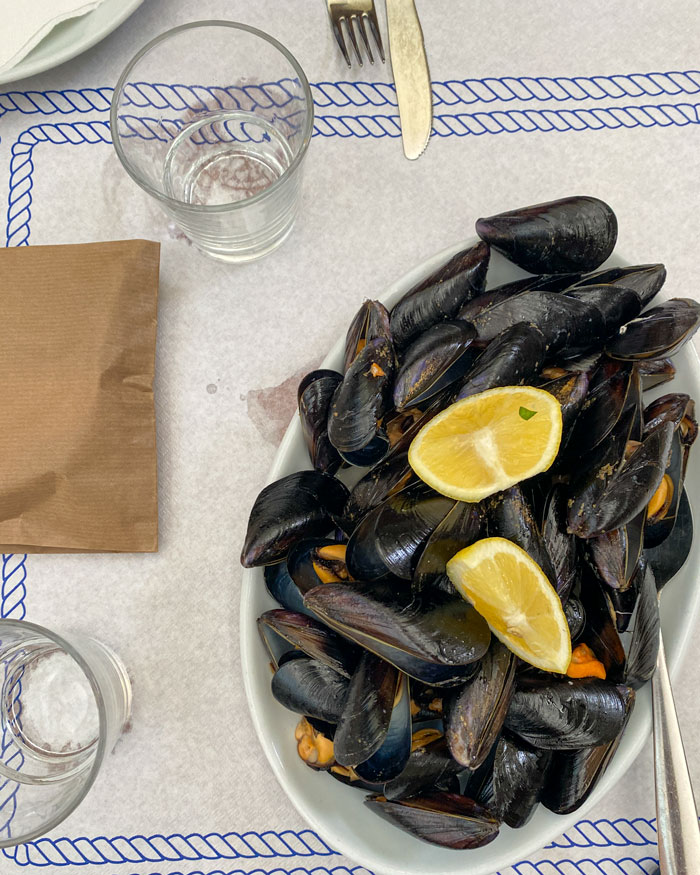
Lunch: Traditional seafood dishes at Circolo dei Pescatori
After a little walk around Milano Marittima, I’d suggest heading to Cervia for lunch. It’s only around 10 minutes by bus, or you can walk along the beach path or sands. The much older big brother to Milano Marittima, Cervia’s traditions, especially those relating to salt and fishing, are much more obvious, yet it remains very much a hidden gem in Italy for international vistors.
One of the most typical places to enjoy lunch is at the Circolo dei Pescatori, which sits along Cervia’s canals and next to the old fish market. Inside, you’ll be treated to a history lesson as well as an Emilia-Romagna feast, as this was (and still is) a traditional fisherman’s club, and adorning the walls are murals of life at sea as well as the various family flags of old fishing families who live here. If you’re lucky, one or two of these boats, with their impressive emblem-decorated brown flags, will be moored outside.
There are plenty of delicious fish options on the menu, from mixed fried fish and grilled plates to local specialities such as Cervia’s acclaimed harvested and hand-checked mussels – some of the best I’ve ever tasted. I’d also suggest the squid risotto if you’re still hungry, as that was equally delicious.
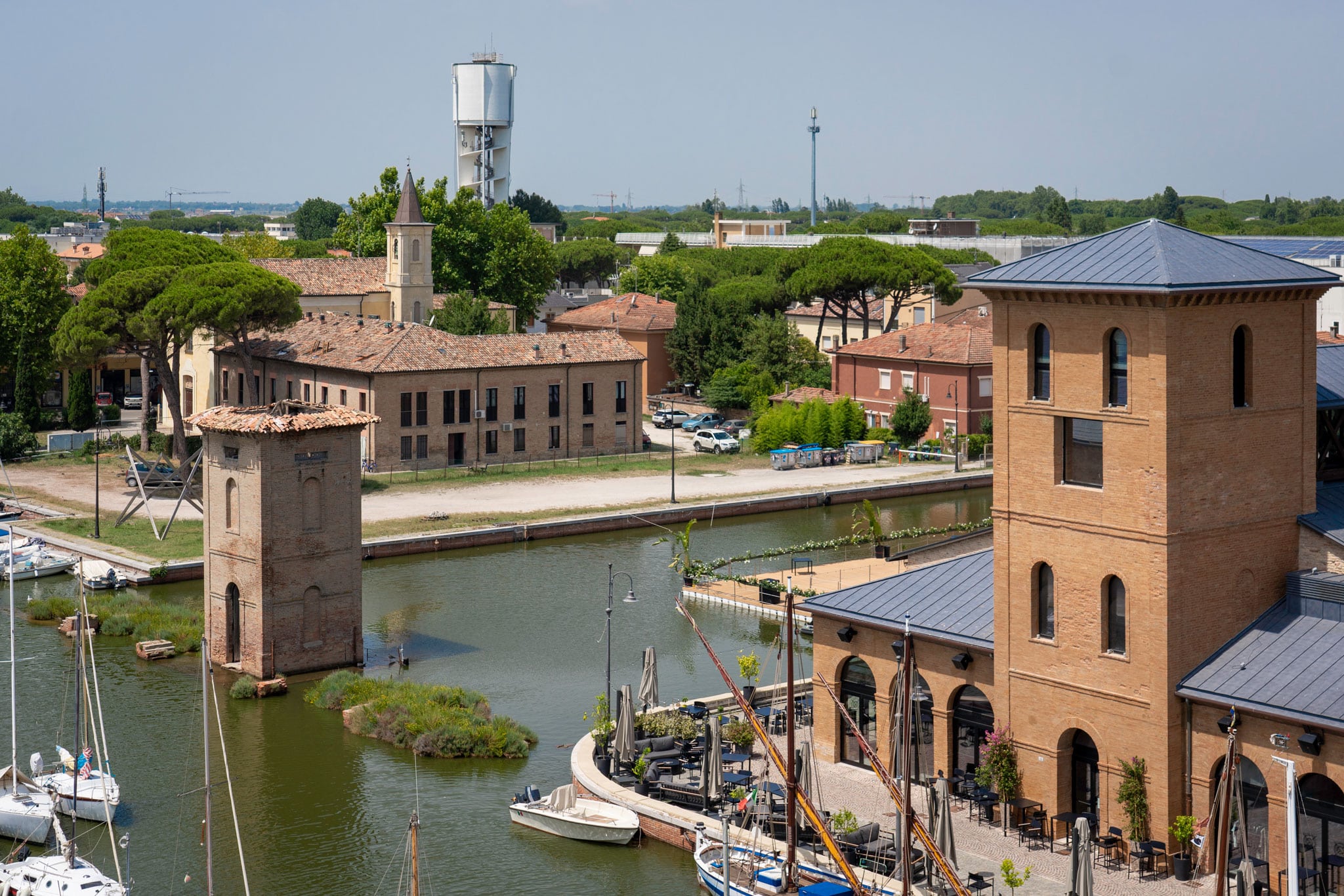
After Lunch: Climb the historic Torre San Michele and explore the Quadrangolo neighbourhood
Follow the canal slightly inland, and you’ll arrive at the old salt warehouse. It was here that the Cervia’s ‘white gold’ from the salt pans would arrive, and the old tower used to have a bridge connecting it to the warehouse.
While many of these old storage spaces have now been repurposed as restaurants and bars, the Torre San Michele is now the tourism office, and you can climb the tower – Cervia’s oldest landmark – for views across the town and canals out to the Adriatic.
Afterwards, take a turn left to head inside the old Quadrangolo neighbourhood, which was the historic core of Cervia. Sadly, the old entrance gates were lost in World War Two, but just inside the walls, you can see the small narrow houses which were once for the salt workers. If you download the immagina Cervia app, it will take you on a short walking tour of the city centre, including the main square of Piazza Giuseppe Garibaldi.
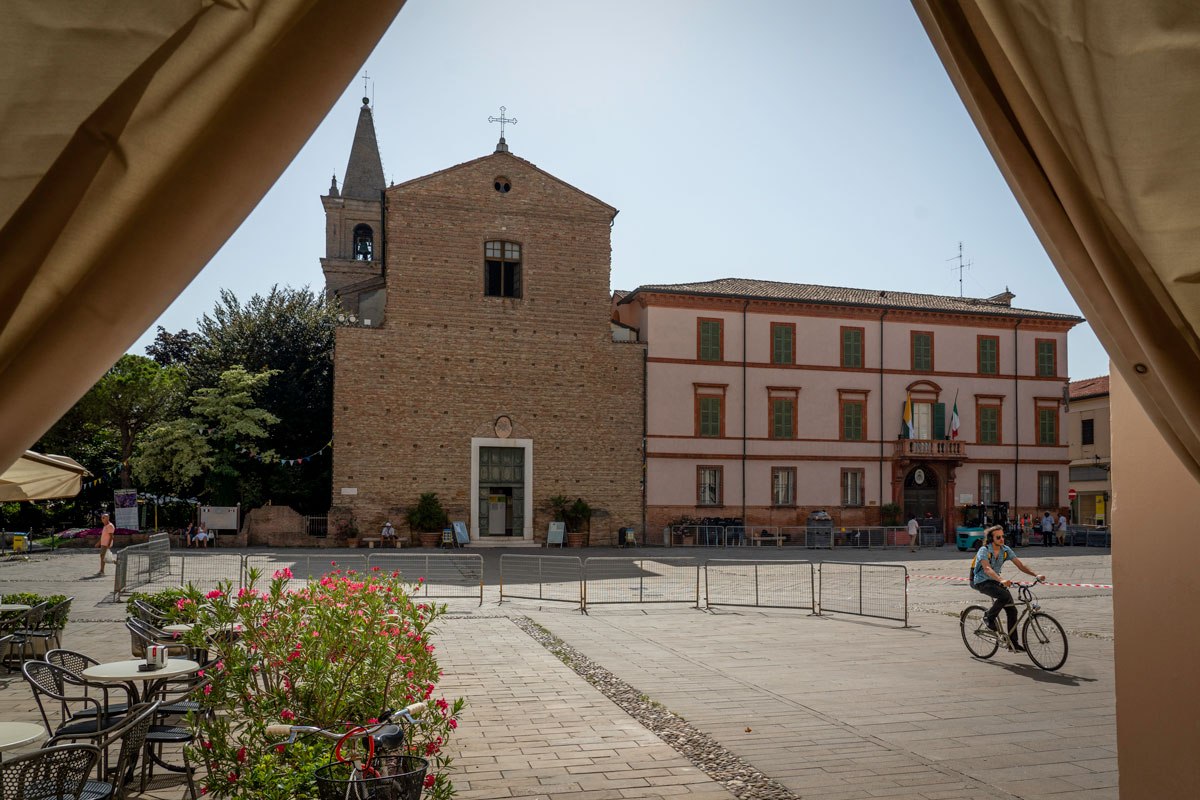
Afternoon: Hit the beach
With the hottest hours of the day behind you, it’s only 10 minutes to walk back to Cervia’s beaches, where you’ll find (what feels like) hundreds of bars and umbrella concessions lining the sands. Sip a beer, enjoy a Spritz, relax under a fluttering blue umbrella or take another dip; the afternoons are very much for relaxing along this stretch of coast – even the salt museum doesn’t open until dusk.
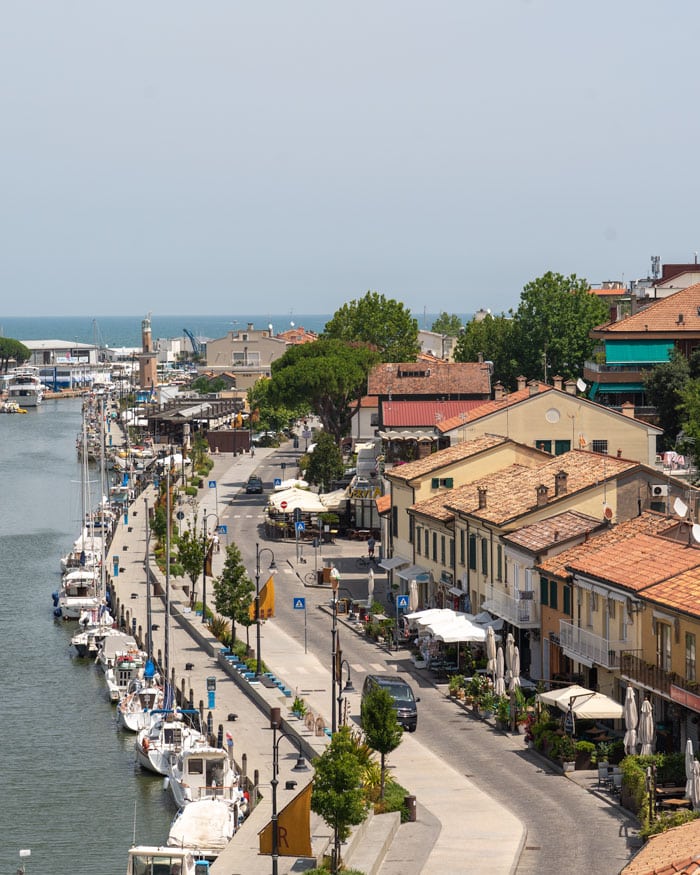
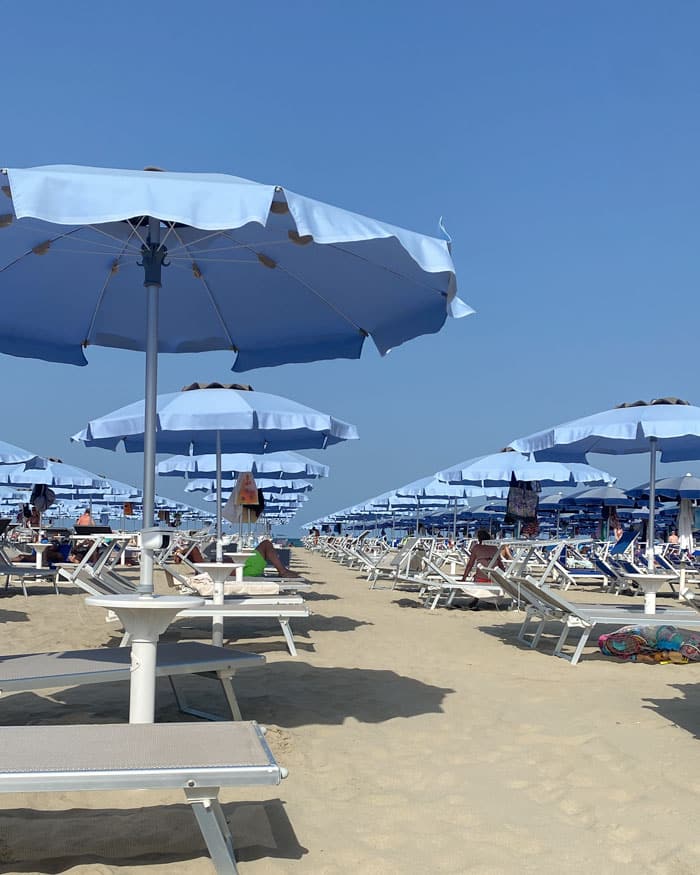
Late Afternoon: See sunset and flamingos at the Cervia Salt Pans
The story of salt and Cervia are intertwined, and the city’s salt pans are well worth a visit to learn more – plus, you might get to spot pink flamingos, one of the best things to do in Italy’s Po Delta?
Around a 20-minute walk from the historic centre is the Salt Pans of Cervia Visitor Centre (Centro Visite Salina di Cervia) which is the gateway to these vast marshlands. You can explore independently or with a guide – best if you want to see the salt harvesting and piles – and I suggest coming late in the afternoon as the sunsets are sublime here, especially with the flamingos on the horizon.
Since the late 20th century, this part of the Po Delta has become an important habitat for migratory birds, adding to the long and historic salt harvesting story, which dates back to the 3rd century BCE. Informative boards along the path fill in some of the salt harvesting history and birdlife around you, and any final questions can be answered at the MUSA Salt Museum.
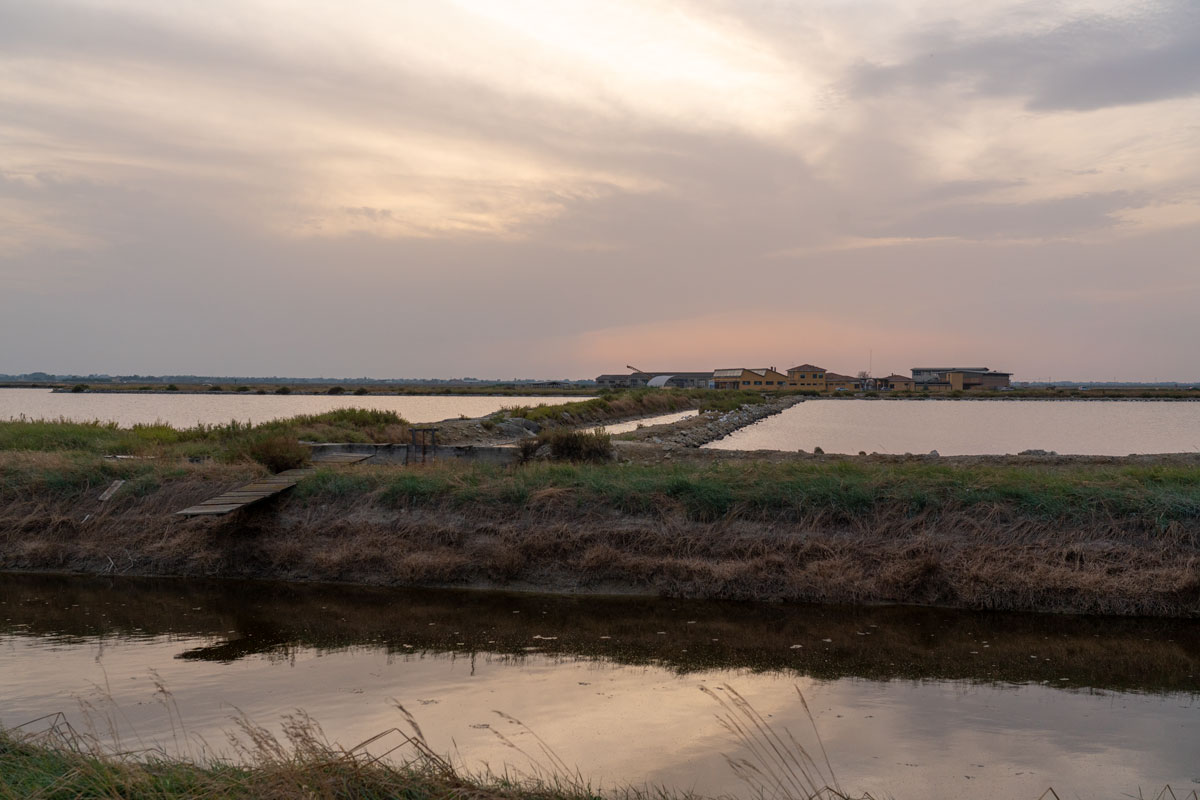
Evening: Visit the MUSA Salt Museum
Open from 8:30 PM until midnight, the MUSA Salt Museum can be visited before dinner or after. Housed inside the old salt warehouse, the space is operated mainly by volunteers who used to work on the salt pans themselves, meaning there is a wealth of knowledge if you have any questions.
Inside, you’ll see the story of the city: how it has been moved and rebuilt (under the watchful eye of the Pope), why Cervia’s salt is slightly sweet and called ‘white gold’, and even one of the large flat-bottomed burchiella boat that is still used to transport the salt as part of the annual salt festival. Even the walls are stained white as the salt used to be stored freely without bags.
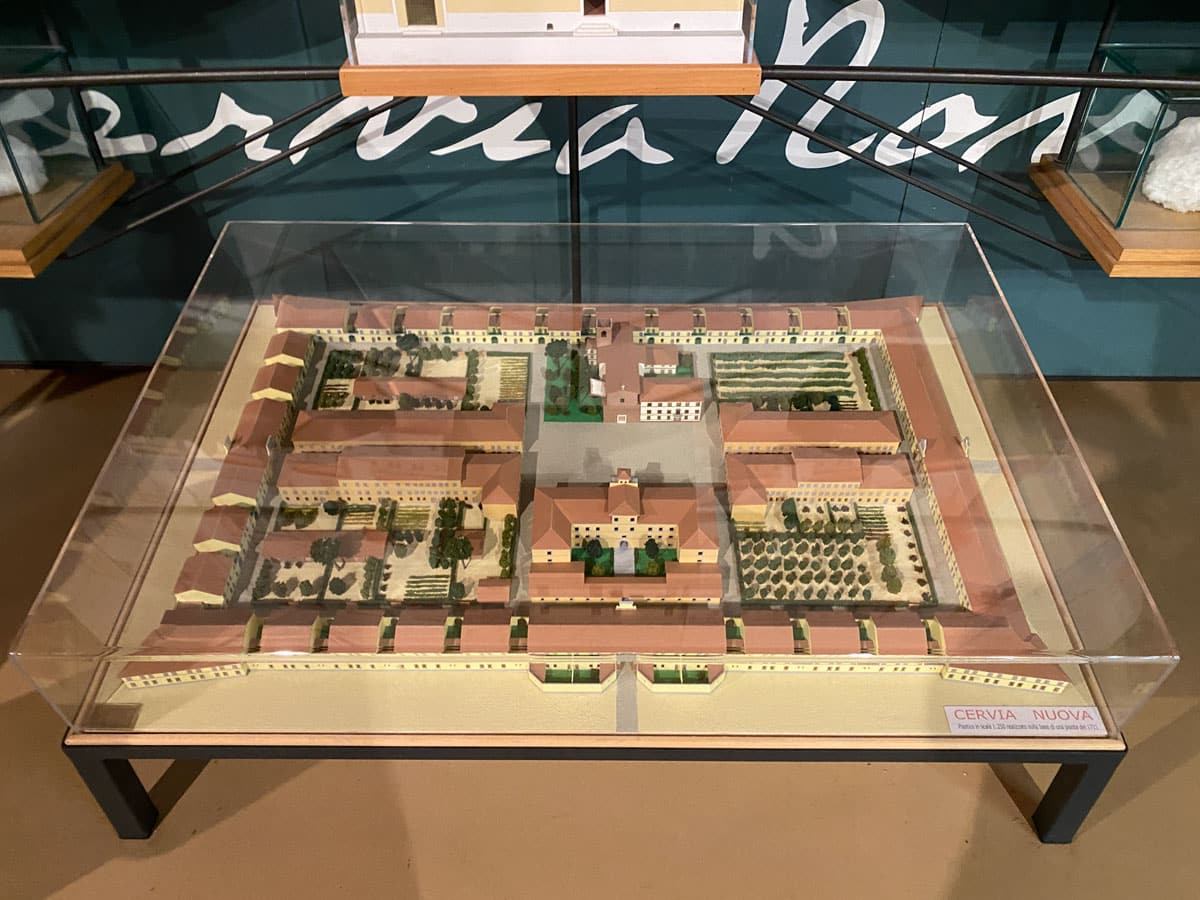
For the most part, information is translated into English, and a couple of decent videos alongside artefacts and reconstructions fill in the picture. For me, the most interesting part was learning about how, in 1630, following many inhabitants dying of malaria due to being surrounded by salt pans, the Pope allowed the residents to move the town. However, there were two rules: the Pope would oversee the new design, and all the old stones were to be moved one by one and rebuilt in the new, current location.
Everything about this town was salt, including the name, which likely comes from the word acervi, the term for large piles of drying salt.
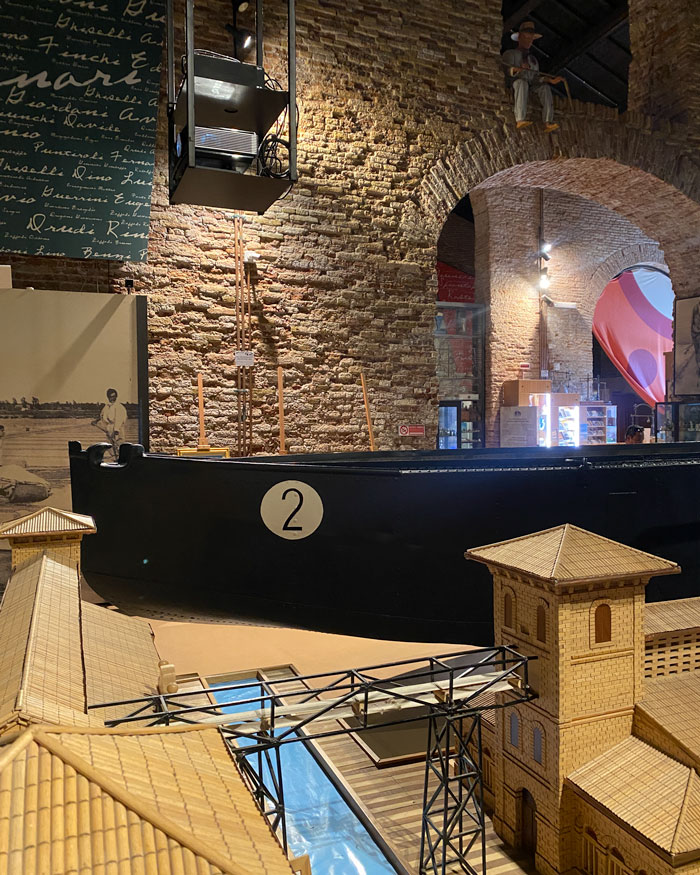
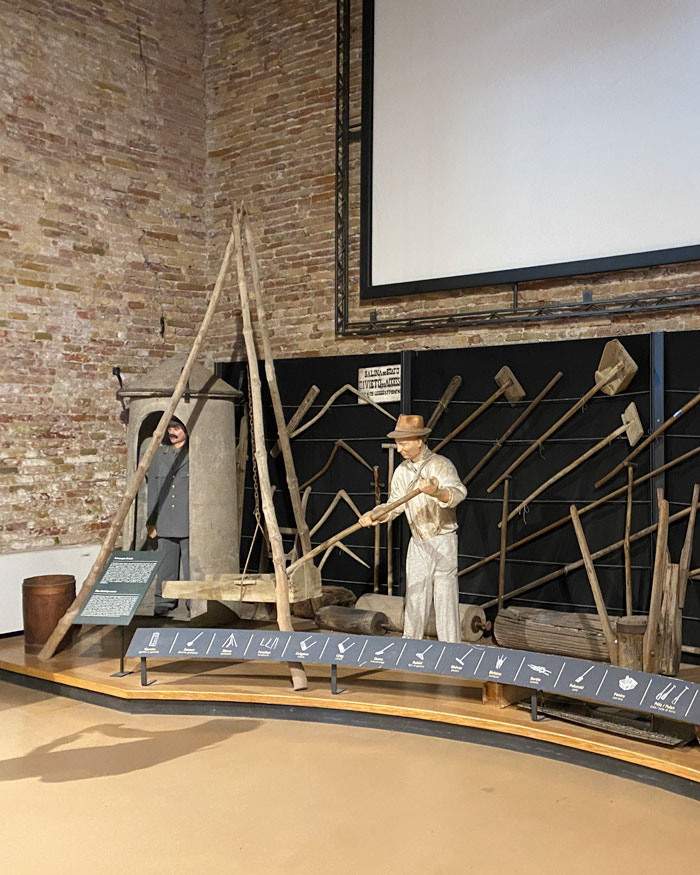
Dinner: Officine del Sale
Given the late-night nature of the museum tour, there’s no need to go far for dinner. Moments away is the Officine del Sale restaurant, housed in another ex-salt building, which offers a menu which is thankfully much more about seafood than salt.
Inside, historical elements of the building, such as the exposed salt-stained brickwork, blend in with the colourful glass panels highlighting the open-plan kitchen. Alternatively, the large garden at the back is great on a pleasant evening. I feasted on fish soups and a huge tray of grilled seafood and shellfish, although the refined menu also had some meat and vegetarian options.
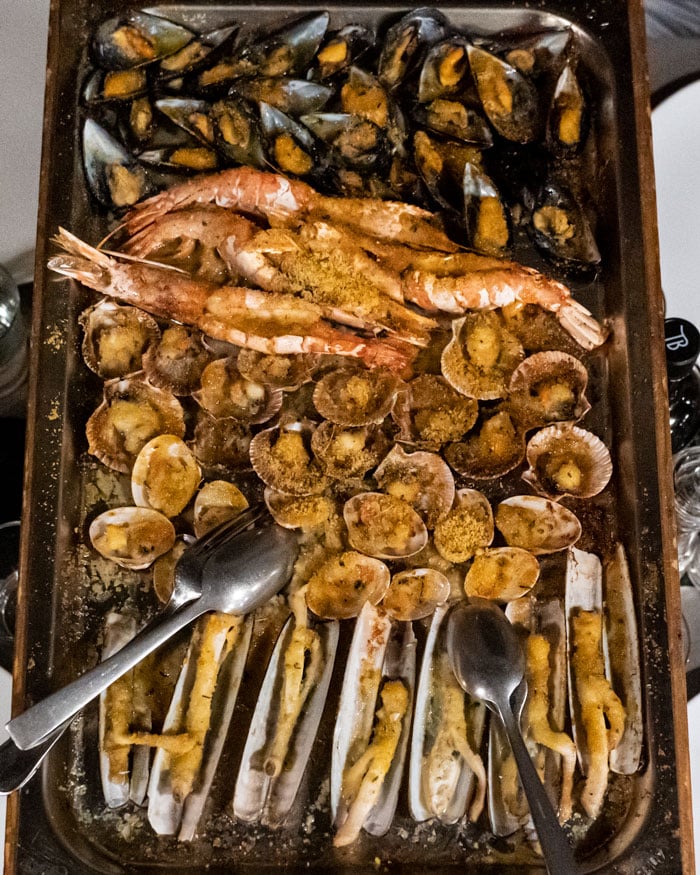
More things to do in Cervia, Italy and Milano Marittima
Cervia and Milano Marittima aren’t just beaches and salt pans, though, and if you have a little more time, or are seeking some alternative activities, here are some more things to do in Cervia during your visit.
Relax in Cervia’s spas
Cervia’s prized salt isn’t merely a seasoning, it’s also celebrated in spa treatments. Pair this with one of Cervia’s thermal baths, and you have a proper pamper session.
Walk Milano Marittima’s boulevards, gardens and statues
Beyond the one boulevard stroll I’ve highlighted above, there are plenty more gardens, old Art Nouveau mansions, and monuments to spot on a stroll around Milano Marittima.
Visit Milano Marittima’s Butterfly House
The Casa delle Farfalle covers some 500 square metres, and the artificial rainforest-style design inside ensures an optimum environment for butterflies to breed. Personally, I’m never a great fan of situations where any animals are kept in captivity, but if you are in the pinewoods, the chances are you’ll stumble upon the (paid-to-visit) building.
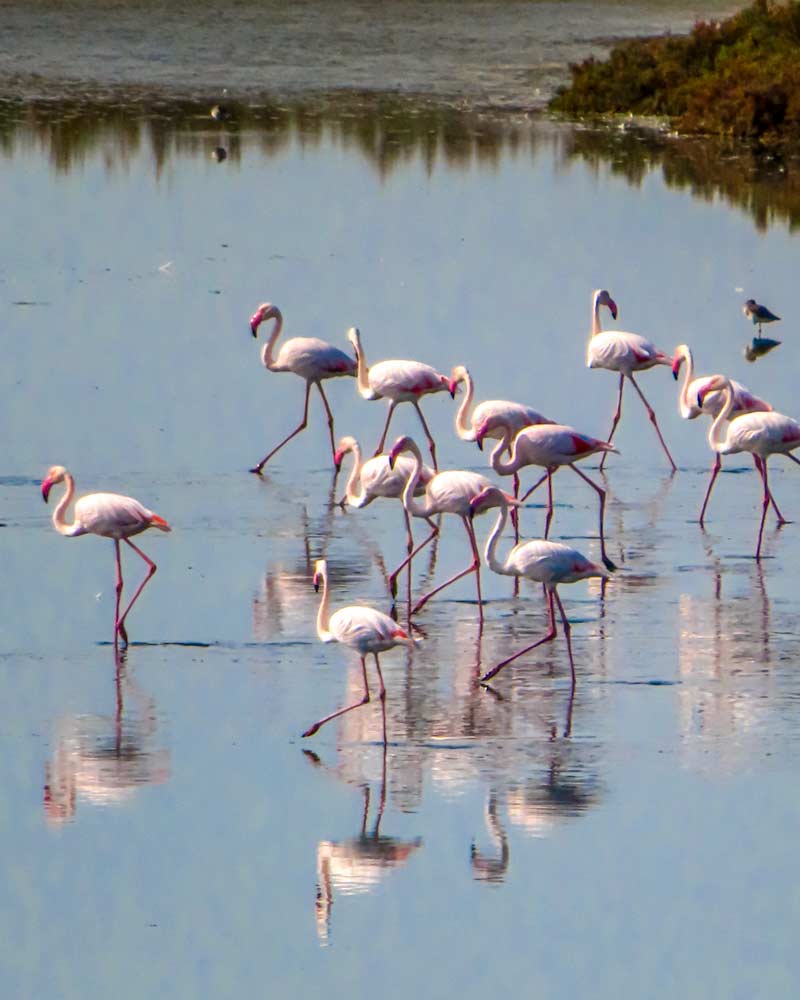
Play a round of Golf
If you’re looking to play a round of golf, then the course at the Adriatic Golf Club just back from the boulevards of Milano Marittima’s centre is the place to be.
Learn more about Cervia’s sweet salt
Alongside the MUSA Salt Museum and flamingo spotting tours mentioned on the one day in Cervia itinerary above, there are a couple of other opportunities to learn more about Cervias’s sweet salt. The museum also organises ‘experiences’ during summer to see what it’s like to work the salt pans for the day, while visits to the piled-high Camillione salt pans are possible by a guided tour during the summer afternoons on Thursdays and Sundays.
The Taste of Salt Festival
During September, Cervia revives many of its ancient traditions during the ‘Sapore di sale’ salt festivals. Over a few days (usually at the start of the month), various salt-focused activities take place, such as reenacting the old salt delivery to the Pope, boat traditions, and salt harvesting experiences.
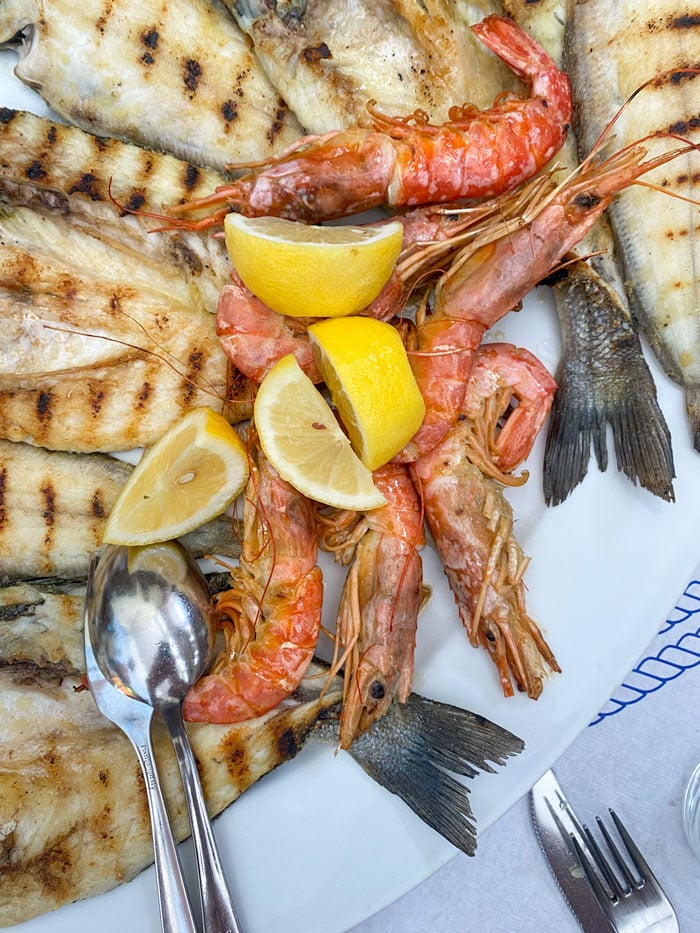
Devour delicious typical dishes
With more time in Cervia and the Romagna region in general, you’ll be able to try even more of the delicious regional dishes – there’s a reason why Emilia-Romagna is often called Italy’s foodie capital. Try piadina (flatbreads) stuffed with local cheese at one of the red-stripped kiosks, sample even more of the seafood bounty on offer, and devour regional pasta dishes such as the ring-like cappelletti. Albana and Sangiovese are two of the most local grapes to pair it all with.
Enjoy the summer evening markets
During summer, a selection of small local markets are hosted most evenings along the canal and also in the car park not far from the tower (this is also the location of the weekly market on Thursdays). Lit by little lights and selling local produce, foods and goods, it’s a nice way to start a warm summer’s evening.
Have a peaceful stroll through the Pinewoods
In between Cervia and Milano Marittima, the environment is more verdant than beachy. Dense pinewood forests string their way through the Po Delta park, allowing ample opportunities for shady hikes or even kayaking adventures.
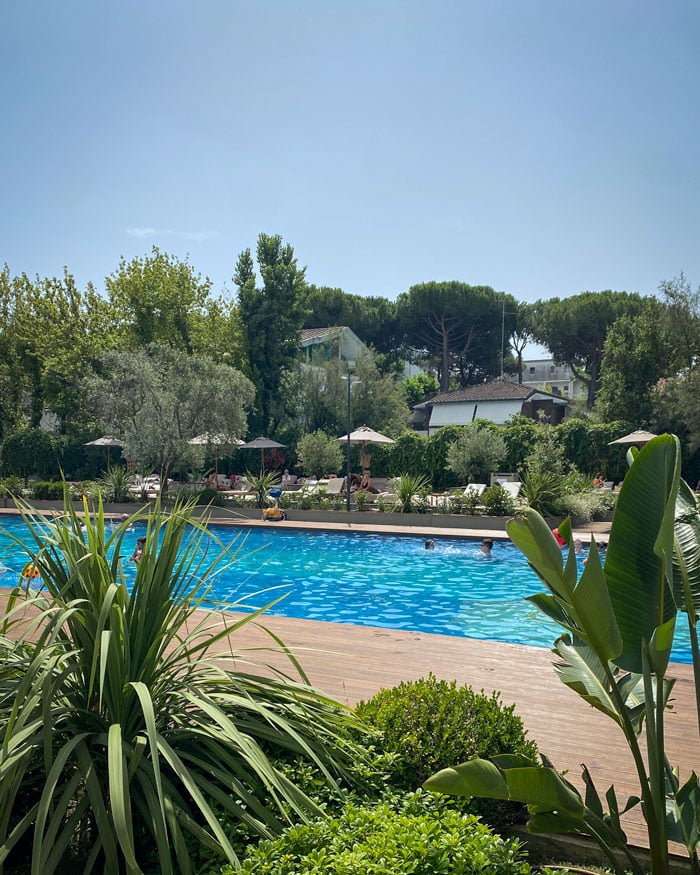
Great places to stay in and around Cervia and Milano Marittima
Along the coast between Cervia and Milano Marittima, you’ll find plenty of options. Just be aware this is a very popular beach destination for Italians in August, meaning prices can soar. A handful of campsites and resort-village-like options can help cut costs too.
Budget-ish: Hotel Moderno B&B
While you won’t really find a cheap budget option in Milano Marittima or Cervia at the height of summer, this spot is great value for what you get. With some Seaview modern rooms at fair prices, it’s a good option if you can snag a deal outside of August. Check prices.
Mid-range: Hotel Smart Cervia
A short walk from Cervia’s beaches and centre, this easy-going hotel is usually an affordable option (outside of peak August beach season) for clean balcony rooms with everything on your doorstep. Check prices.
Luxury: MarePineta Resort, Milano Marittima
The first hotel ever built in Milano Marittima, MarePineta, is now a renovated and luxurious lodging choice, just a short walk from the sea. With a gorgeous pool, tennis courts, courtyard restaurants and plush rooms, this is an excellent choice for a refined Romagna beach holiday. Check prices.
Best time to visit Cervia, Italy and other FAQS
The best time to visit Cervia and Milano Marittima is between spring and autumn – but be warned, summer can be busy with holidaying locals and higher temperatures. Cervia, with its salt history and lived-in historic centre, can make for a good Adriatic day trip year-round, while Milano Marittima is designed to be more of a resort destination, and many restaurants and hotels close between November and April.
There are a few seasonal events to keep on your radar, such as the Taste of Salt Festival in September, the Modulo Fest (an art and experimental music festival) in mid-June, and the Cervia Garden City event (when the gardens and flower displays are at their brightest) occurs between May and September. Another important event in Cervia’s calendar is San Lorenzo, held in mid-August when fireworks and late-night parties celebrate summer.
Cervia – Milano Marittima train station is easily reached by direct train services from Milan, Ravenna, Rimini and Bologna (around 90 minutes from the regional capital). From larger cities such as Venice, it takes around three hours to drive, or similar with a connecting train service.
Cervia is certainly worth visiting for its history of sweet salt, salt pans with flamingos, and award-winning beaches. If you’re already in the Emilia-Romagna region looking for a coastal day trip, it’s a winner, or stay a little longer for a seaside holiday.
Cervia is most famous for its prized ‘sweet’ salt, which is often referred to as white gold. A historical city with connections to the Pope, the salt warehouses, a grid-like design (which has been relocated), and popular beaches draw in the crowds.
Milano Marittima is famous as a Garden City. However, for many visitors, it’s now more recognised as being one of the best coastal resorts on the Emilia-Romagna Riviera. With grand villas, popular beaches, and plenty of nightlife, it’s a fun place for a summer getaway.
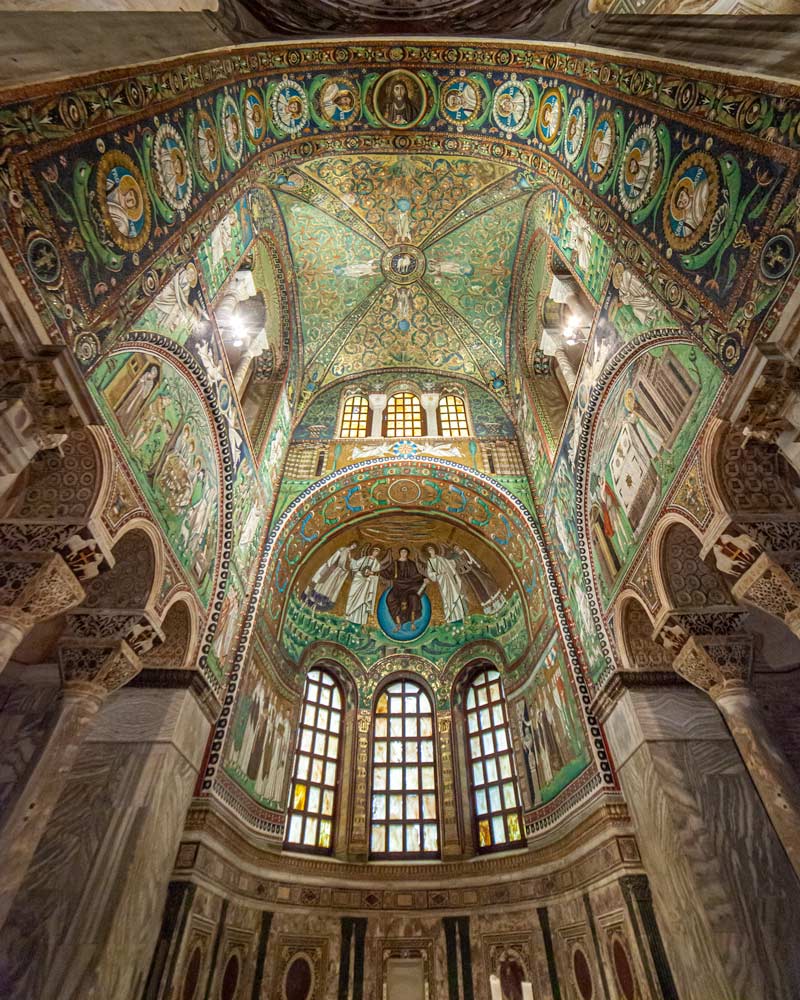
Where to travel after Cervia, Italy
After you’ve lapped up the beach, studied the salt, and savoured all the seafood, you might be wondering where to visit next in Emilia-Romagna? Here are some nearby suggestions.
Marvel at the mosaics of Ravenna
Ravenna is undoubtedly one of the most underrated cities in Europe. Once the capital of the Western Roman Empire, the city has eight Unesco-listed monuments. I’d suggest spending at least two days in Ravenna to give you enough time to see all the mosaics and attractions of this fantastic historic city.
Enjoy beach days on the Emilia Romagna coast
The Emilia Romagna Riviera is a great place to escape the heat on summer days, and it extends well beyond Cervia and Milano Marittima. Why not spend a week hopping along the coast exploring the Po Delta, Comacchio and some other storied cities?
Spot flamingos and canals in Commachio
The old fishing community of Comacchio is centred around a beautiful historic village. Canal heavy, it’s often referred to as Little Venice. However, you’re far more likely to see flamingos and eels here than crowds.
Explore more of Emilia Romagna (and beyond)
From Cervia, you’re well placed to discover more canals in Venice, spend two days in Bologna eating the most delicious dishes, head to the hidden away mediaeval town of Brigishalla or explore all of the other amazing places to visit in Emilia Romagna. You could even take a day trip to San Marino, a landlocked micro-start that is just inland.

Read More:
Best places to visit in Emilia Romagna
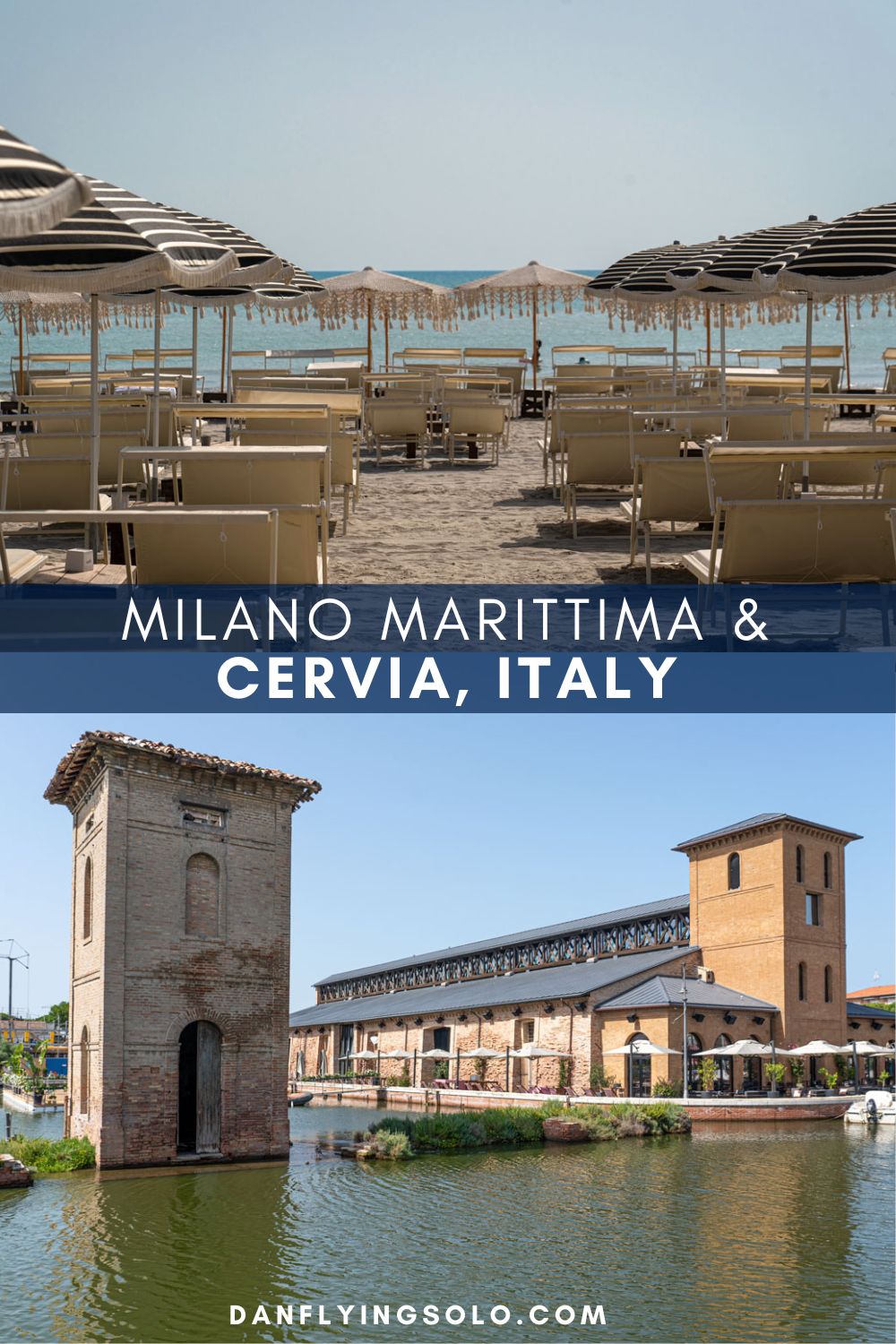




Leave a Reply
Want to join the discussion?Feel free to contribute!